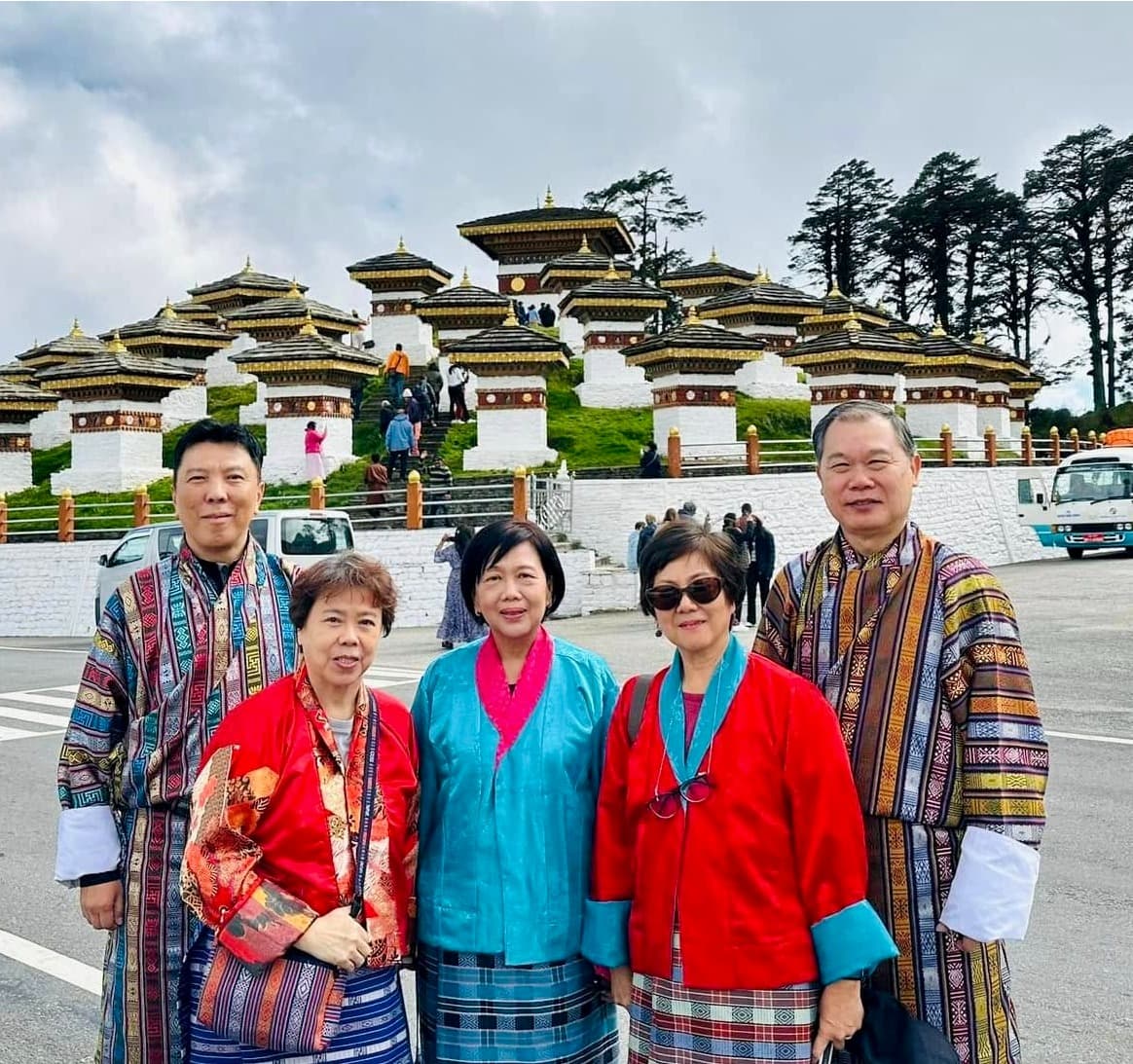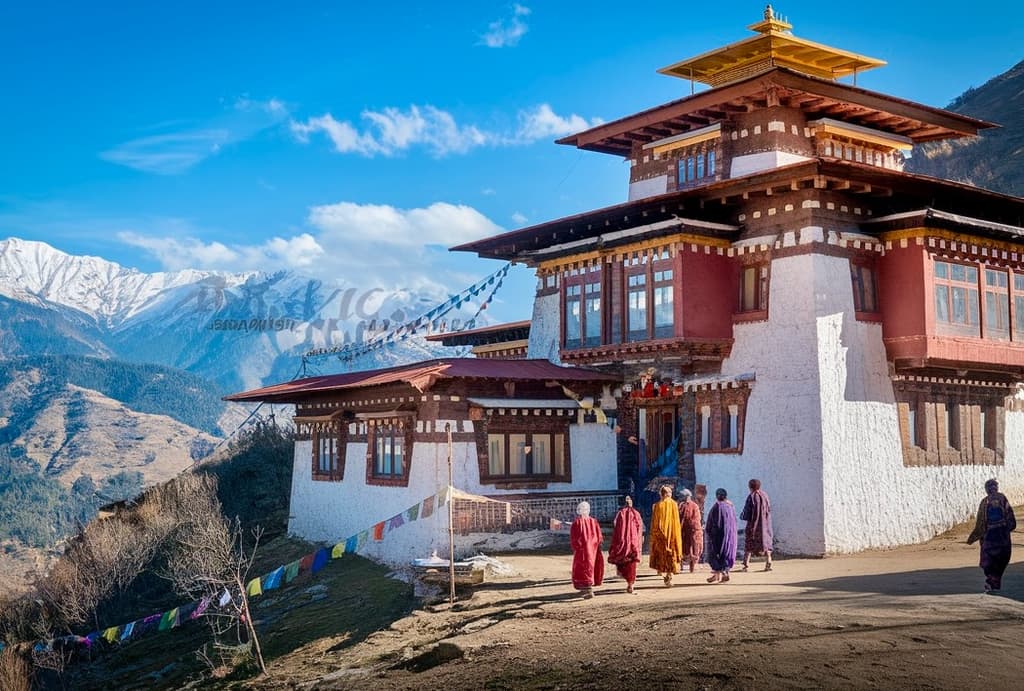Thimphu—The Capital City of Bhutan
Overview
Thimphu, the capital of Bhutan, is a vibrant city located in the western part of the country, at an altitude of 2,320 meters. Known for blending traditional Bhutanese culture with modern influences, Thimphu is the largest city in Bhutan and serves as the political, cultural, and economic heart of the country. Despite its growth and modernization, the city has managed to retain its unique charm, with its striking Tibetan-style architecture, religious sites, and cultural events.
Thimphu offers a unique mix of history, spirituality, and natural beauty. Visitors can explore Buddhist monasteries, visit markets selling traditional handicrafts, and enjoy outdoor activities in the surrounding mountains. Thimphu is also famous for its serene atmosphere, which contrasts with the hustle and bustle of many other capital cities, making it a peaceful place to visit and explore.
Major Highlights
- Tashichho Dzong: One of the most iconic buildings in Bhutan, the Tashichho Dzong is a large fortress-monastery located on the northern edge of Thimphu. It serves as the government seat of Bhutan and the summer residence of the central monk body. The dzong’s striking architecture and scenic location near the Wang Chhu River make it a must-visit.
- Buddha Dordenma Statue: This enormous Buddha statue, standing at 51.5 meters, is one of the largest of its kind in the world. Located on a hilltop overlooking the Thimphu Valley, it offers panoramic views of the city and is a symbol of peace, prosperity, and harmony.
- Memorial Chorten: Built in memory of the third king of Bhutan, King Jigme Dorji Wangchuck, the Memorial Chorten is a prominent Buddhist shrine in Thimphu. Visitors can often see locals walking around the stupa in prayer, making it an excellent spot for experiencing Bhutanese spirituality.
- National Folk Heritage Museum: This museum showcases the traditional Bhutanese way of life, offering exhibits on Bhutanese art, tools, and traditional architecture. It provides a fascinating glimpse into the country’s rich cultural history and rural lifestyle.
- Changangkha Lhakhang: A serene and ancient temple perched on a hill in Thimphu, Changangkha Lhakhang is dedicated to Avalokiteshvara, the bodhisattva of compassion. It’s a popular pilgrimage site and offers magnificent views of the city.
- Tashicho Dzong and the Summer Residence of the Central Monk Body: The dzong hosts important religious and government functions and is a center of Bhutanese culture. The royal offices and a beautiful monastery make it an important landmark in the city.
- Thimphu Weekend Market: Open on Fridays to Sundays, this market is a great place to experience Bhutanese food, clothing, and handicrafts. It offers a variety of fresh produce, traditional Bhutanese textiles, and handmade crafts, allowing visitors to experience local culture first-hand.
Accommodation & Food
Thimphu offers a wide range of accommodation options, from budget guesthouses to luxury hotels. There are several comfortable hotels, including Taj Tashi, which offers luxury and traditional Bhutanese architecture. For a more intimate and cultural experience, small guesthouses and eco-lodges are available, where visitors can enjoy the hospitality of the local people. The accommodations often provide panoramic views of the surrounding mountains and valley, giving a sense of peace and relaxation.
Food in Thimphu is an important part of the cultural experience. Bhutanese cuisine is rich in flavor, with chili peppers being a key ingredient in most dishes. Popular dishes include ema datshi (a spicy cheese and chili dish), momos (dumplings), and thukpa (noodle soup). Many restaurants and hotels offer a blend of Bhutanese, Indian, Chinese, and Western cuisine, making it easy for tourists to enjoy their meals. Traditional Bhutanese meals are often served with butter tea, a local drink made with tea, butter, and salt.
Route to Thimphu
Thimphu is easily accessible from Paro, which is approximately 1 hour’s drive from the Paro International Airport. Visitors can hire taxis, private vehicles, or even buses to get from Paro to Thimphu, with scenic views along the way. The drive offers beautiful views of the Thimphu Valley, with winding roads through the hills and forests. Thimphu is also well connected by road to other parts of Bhutan, such as Punakha and Phobjikha, making it a great base for exploring the country.
Tips for Visiting Thimphu
- Best Time to Visit: The best times to visit Thimphu are during spring (March to May) and autumn (September to November), when the weather is pleasant and the skies are clear. Winter can be cold, and the monsoon season (June to August) can bring heavy rainfall.
- Respect Local Customs: Bhutan is a deeply spiritual and culturally rich country. When visiting monasteries and temples, dress modestly and follow local customs, such as removing shoes when entering sacred sites.
- Weather and Clothing: The weather in Thimphu can vary, with cool mornings and evenings, especially in the winter. It’s recommended to bring layers of clothing to stay comfortable during the day and colder evenings.
- Altitude Awareness: Thimphu is situated at an altitude of 2,320 meters. While this isn’t extremely high, it’s still a good idea to take it easy for the first day or two to acclimatize to the altitude.
- Currency: Bhutan’s currency is the Ngultrum (BTN), but the Indian Rupee (INR) is also widely accepted. It’s best to carry cash, as credit card facilities may not be available in all areas.
- Transportation: Thimphu is a walkable city, and many of its attractions are within a short distance of each other. Taxis and private vehicles are available for more remote destinations.
Why Visit Thimphu with Luxury Holidays Nepal?
- Expert Guides: Luxury Holidays Nepal offers knowledgeable local guides who can provide detailed insights into the culture, history, and significance of Thimphu’s major landmarks.
- Seamless Logistics: From transportation and permits to accommodations and sightseeing, Luxury Holidays Nepal takes care of all logistics, ensuring a smooth and stress-free visit to Thimphu.
- Luxury Accommodation: Enjoy comfortable stays at luxury hotels and resorts, offering modern amenities while keeping in tune with traditional Bhutanese architecture.
- Customizable Itineraries: Whether you’re looking to explore the spiritual sites of Thimphu or experience cultural activities like archery or traditional Bhutanese music and dance, Luxury Holidays Nepal offers tailored itineraries to fit your interests.
- Exclusive Cultural Experiences: Luxury Holidays Nepal can arrange exclusive cultural experiences, such as private tours to Bhutanese festivals, visits to local monasteries, and interactions with Bhutanese artisans.
FAQs
Q: What is the best time to visit Thimphu?
A: The best times to visit Thimphu are spring (March to May) and autumn (September to November) when the weather is pleasant and clear, ideal for sightseeing and outdoor activities.
Q: How do I get to Thimphu?
A: Thimphu is about 1 hour’s drive from Paro, where the Paro International Airport is located. Visitors can travel to Thimphu by car or taxi. The drive offers scenic views of the valley and surrounding mountains.
Q: What are the main attractions in Thimphu?
A: Major attractions in Thimphu include Tashichho Dzong, Buddha Dordenma Statue, Memorial Chorten, the National Folk Heritage Museum, and the Changangkha Lhakhang.
Q: Can I visit Thimphu on a day trip?
A: Yes, Thimphu can be visited on a day trip from Paro, as the distance is only about 1 hour by road. However, a longer stay is recommended to fully explore the city and its surroundings.
Q: What should I bring when visiting Thimphu?
A: Bring comfortable walking shoes for sightseeing, layered clothing to adjust to the cool mornings and evenings, and a camera to capture the beautiful landscapes.
Q: Is Thimphu safe for travelers?
A: Yes, Thimphu is very safe for travelers. Bhutan is one of the safest countries in the world, and the locals are very welcoming and helpful.
Q: What currency is used in Thimphu?
A: The official currency of Bhutan is the Ngultrum (BTN). Indian Rupees (INR) are also accepted in most places. It’s recommended to carry cash as credit cards may not be accepted everywhere.
Q: Are there any local festivals in Thimphu?
A: Yes, Thimphu hosts several festivals throughout the year, including the Thimphu Tshechu, a vibrant celebration of Bhutanese culture with dances, music, and religious rituals.
Q: What is the altitude of Thimphu?
A: Thimphu is situated at an altitude of 2,320 meters (7,616 feet) above sea level. Visitors should take care to acclimatize, especially if traveling from lower altitudes.










